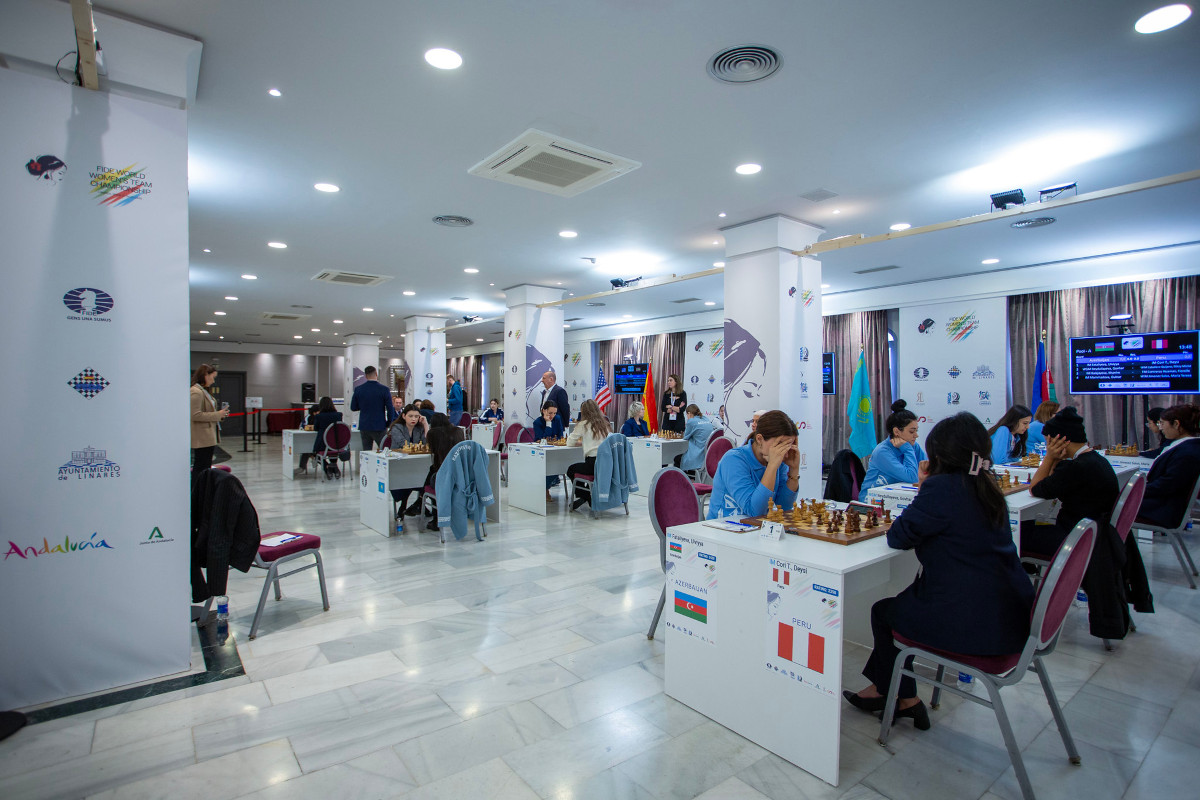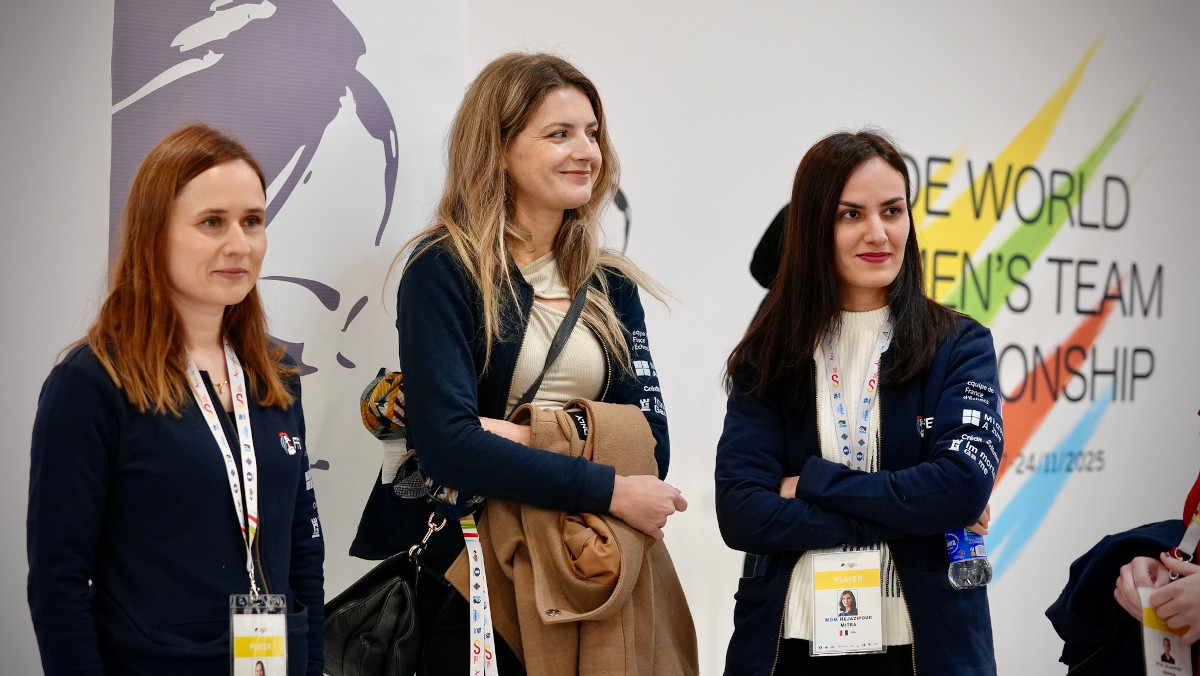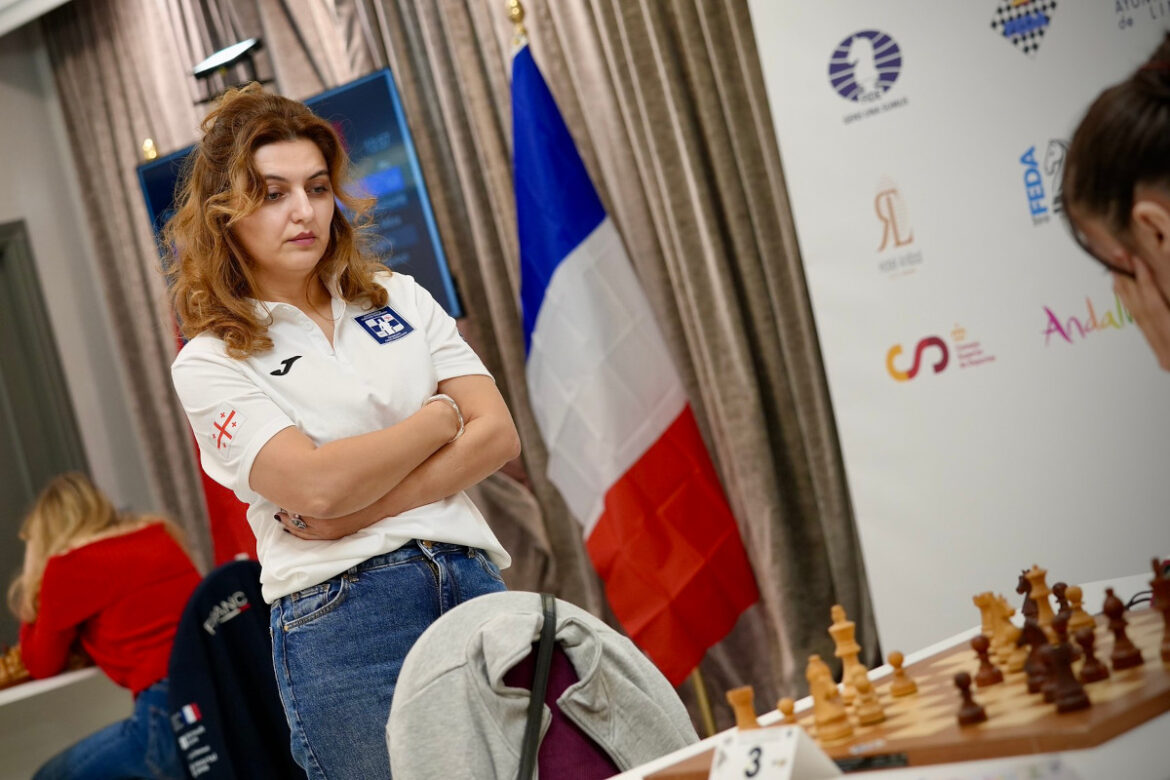Linares receives some of the strongest women’s national teams in the world
The Women’s World Team Championship began at the Hotel Aníbal in Linares, Spain, with two rounds played on the opening day. The twelve teams have been split into two pools, each contesting a single round-robin over three days: two rounds on Tuesday, two on Wednesday and one on Thursday. The top four teams in each pool will move on to the quarterfinals, with first place earning a theoretically more favourable pairing in the knockout stage.
As in the classical Linares tournaments of the late twentieth century, a gong signalled the start of each round, with Arkady Dvorkovich and Vishy Anand performing the ceremonial duties.
Data, plans, practice – the new Opening Report In ChessBase there are always attempts to show the typical plans of an opening variation. In the age of engines, chess is much more concrete than previously thought. But amateurs in particular love openings with clear plans, see the London System. In ChessBase ’26, three functions deal with the display of plans. The new opening report examines which piece moves or pawn advances are significant for each important variation. In the reference search you can now see on the board where the pieces usually go. If you start the new Monte Carlo analysis, the board also shows the most common figure paths.

The playing hall at the legendary Hotel Aníbal | Photo: Pavel Dvorkovich

Indian legend Viswanathan Anand | Photo: Pavel Dvorkovich
Pool A
Three teams won both their matches on Tuesday. In Pool A, the FIDE team (Russia), the highest-rated in the group, claimed victories over Kazakhstan and the United States, the second and third seeds. They lead the standings with 4/4 match points, while Peru sit last on 0/4. The remaining four teams all have 2/4, as no match ended drawn on the first day.
One of the key encounters in the race for qualification saw Kazakhstan defeat Azerbaijan 2½-1½. Three of the four games were drawn. The decisive point was delivered by 19-year-old Xeniya Balabayeva, who beat Gulnar Mammadova with the white pieces.

The formidable Russian duo of Aleksandra Goryachkina and Kateryna Lagno lead the “FIDE team” | Photo: Pavel Dvorkovich

Armenian-born Anna Sargsyan played the first round on board two for Team USA – she lost to Spain’s Sabrina Vega, but her team still won the match | Photo: Pavel Dvorkovich
Balabayeva 1-0 Mammadova
Standings after round 2

Pool B
In Pool B, China and Georgia, the two highest-rated teams, also obtained perfect scores. Georgia recorded two clear 3½-½ wins, while China prevailed twice by 2½-1½. Ukraine and India stand third and fourth on 2/4 match points, while France and Uzbekistan, were both defeated twice, so they stand on 0/4.
The standout result of the day in this group was India’s victory over Ukraine. India, fielding a lineup without its very strongest players, were out-rated on every board, particularly the top two. Nevertheless, wins by Padmini Rout and Savitha Shri against Anna Ushenina and Natalia Zhukova secured a 2½-1½ victory – Bozhena Piddubna scored Ukraine’s sole win on board four. Savitha’s performance was especially notable, as the 18-year-old showed strong tactical awareness to overcome Zhukova with the white pieces.
The Ragozin Defence (1.d4 Nf6 2.c4 e6 3.Nf3 d5 4.Nc3 Bb4) has become a cornerstone of modern chess theory. With 3.Nf3 gaining popularity as a way to avoid Nimzo-Indian setups and the challenges Black faces in the Queen’s Indian, the Ragozin offers a solid and dynamic alternative.
Free video sample: Introduction
Free video sample: 5.cxd5 exd5 6.Bf4

Song Yuxin played on the top board for China | Photo: Pavel Dvorkovich

France’s Deimante Daulyte-Cornette, Sophie Milliet and Mitra Hejazipour | Photo: FIDE
Savitha 1-0 Zhukova
Analysis by GM Karsten Müller
Standings after round 2

All games
EXPAND YOUR CHESS HORIZONS
Data, plans, practice – the new Opening Report In ChessBase there are always attempts to show the typical plans of an opening variation. In the age of engines, chess is much more concrete than previously thought. But amateurs in particular love openings with clear plans, see the London System. In ChessBase ’26, three functions deal with the display of plans. The new opening report examines which piece moves or pawn advances are significant for each important variation. In the reference search you can now see on the board where the pieces usually go. If you start the new Monte Carlo analysis, the board also shows the most common figure paths.
